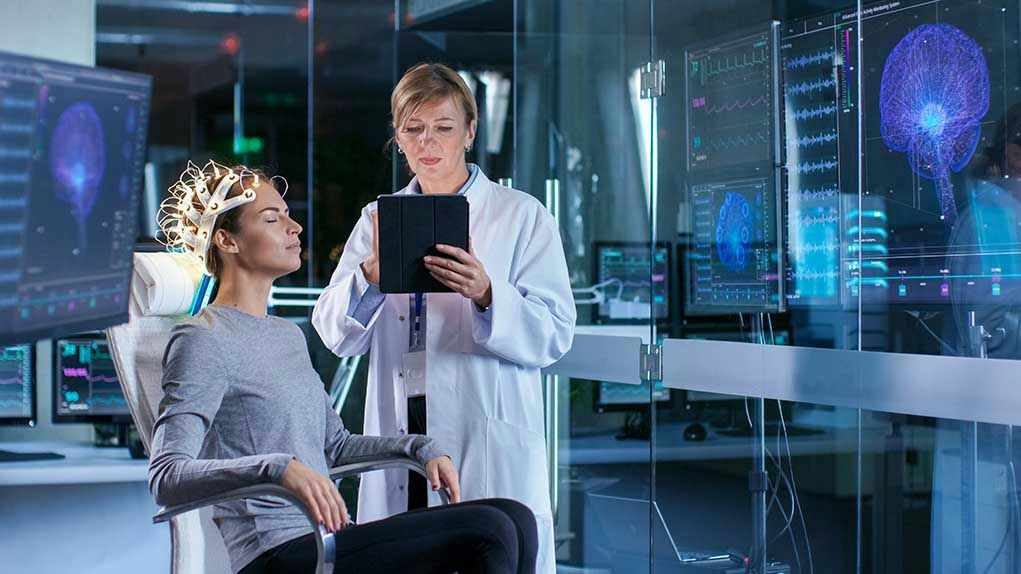
Ten thousand people have already lined up for a brain chip that only a dozen humans have touched—what compels thousands to volunteer for a technology that promises to rewrite not just medicine, but what it means to be human?
Story Snapshot
- Neuralink’s brain chip has attracted 10,000 eager sign-ups despite being implanted in only 12 clinical trial patients so far.
- Elon Musk’s vision for human-AI symbiosis is shifting brain-computer interfaces from the lab to the masses.
- Clinical progress and regulatory breakthroughs are accelerating, but ethical and societal debates are intensifying.
- The waitlist signals blockbuster demand—and the possibility of a future where human minds and machines are inseparable.
10,000 Names—and a Future Up for Grabs
Ten thousand people have volunteered for Neuralink’s Patient Registry since it opened globally in early 2025, putting their names forward for a brain chip still in early experimental stages. This unprecedented demand stands in stark contrast to the current reality: only 12 people have actually received the implant, with plans for 13 more by the end of 2025. Public fascination far outpaces clinical supply, and the gap between aspiration and availability is growing wider by the month.
For these would-be pioneers, the motivations are as diverse as the risks. Some live with paralysis or neurological disease and seek restoration of lost function—independence, communication, dignity. Others crave cognitive enhancement, inspired by Musk’s claims of telepathy, memory uploads, and AI integration. The promise of being first to merge mind and machine is intoxicating. The stakes are existential: for patients, hope; for tech enthusiasts, the thrill of the unknown; for Musk, nothing less than keeping humanity relevant in an AI future.
The Path from Lab to Living Room
Neuralink’s journey began in 2016, fueled by Musk’s conviction that humans must directly interface with AI to avoid obsolescence. Decades of brain-computer interface research had yielded academic breakthroughs, but high costs and complexity kept the field confined to research hospitals and elite labs. Musk’s ambition: make brain chips as accessible as smartphones. In May 2023, Neuralink secured FDA clearance for its first human trial—an inflection point that transformed the field from niche science to global spectacle.
The first human recipient in January 2024—a paralyzed individual now using the device to play chess and learn languages—became the poster case for the technology’s raw potential. By October 2025, twelve people bore implants, and the company had won FDA Breakthrough Device status for speech restoration. The N1 Implant, a coin-sized computer with thousands of neural sensors, is inserted via a custom robotic surgeon. Its capabilities far surpass previous devices, but each new patient is still a leap into the unknown. Clinical trial eligibility remains tightly restricted to those with severe paralysis or neurological loss. For the 10,000 on the registry, most must wait as the technology matures and safety is proven.
Rivals, Regulators, and the Race to Scale
Neuralink’s waitlist is not just a sign of public hunger; it signals a seismic shift in the neurotechnology industry. Academic rivals and commercial competitors, including Precision Neuroscience, have fast-tracked their own brain-computer interfaces, winning regulatory milestones and attracting investment. The FDA’s embrace of “Breakthrough Device” status for BCIs marks a new era of medical innovation, but also heightens scrutiny. Each success story is a case for rapid adoption; each setback, a reason for caution.
Regulators face a delicate balance: how to foster world-changing innovation while protecting vulnerable patients from unproven risks. Peer-reviewed data for Neuralink’s first patients was only submitted to journals in October 2025, highlighting the lag between hype and scientific validation. As more patients are implanted and data accumulates, the debate over safety, efficacy, and ethical boundaries will only intensify.
Human Identity at the Edge of Technology
Musk’s vision is as audacious as the technology itself. He envisions a future where brains and computers are so tightly linked that memories can be uploaded, personalities copied, and consciousness transferred to machines or cloned bodies. Critics warn of unknown long-term risks: infection, device failure, psychological effects, and unprecedented privacy concerns. Bioethicists question if informed consent is even possible for a technology with such speculative consequences.
The 10,000-person waitlist is not just a number—it is the leading edge of a societal experiment. If Neuralink and its competitors succeed in scaling, millions could one day opt for implants, blurring the line between healing and enhancement. Economic opportunities abound, from new health industries to workforce participation for people with disabilities. But so do risks: technological inequality, new forms of surveillance, and the prospect of a world where the definition of “human” is forever changed. For now, the registry is a bet on hope, hype, and the very human desire to be part of something bigger—even if no one can quite predict what that “something” will become.
Sources:
The Independent: Neuralink Elon Musk brain chip patients
The Independent: Neuralink brain chip clinical trials
Bloomberg: Neuralink submits brain implant patient data












